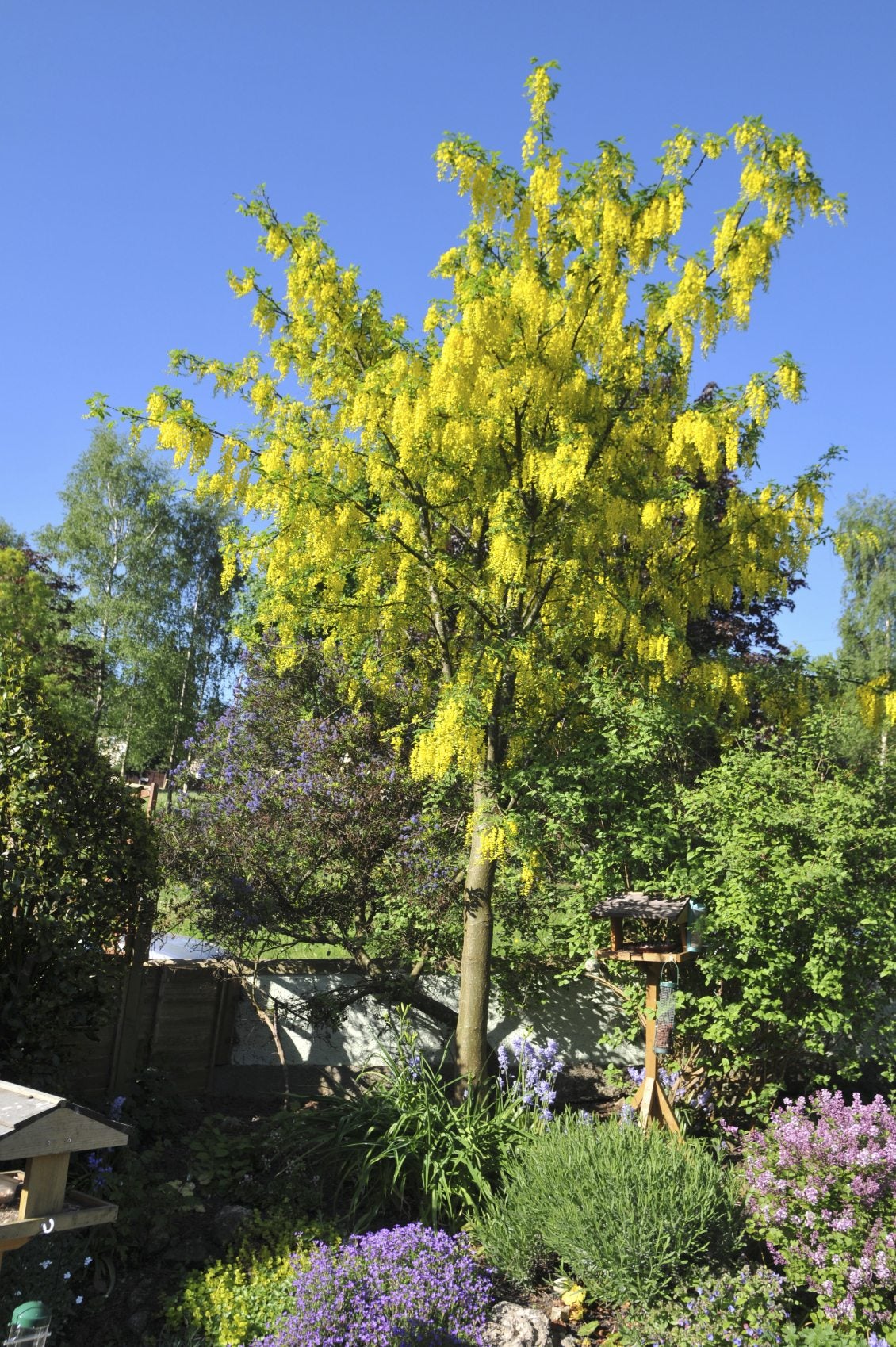Laburnum Tree Information: Tips On Growing Goldenchain Trees


The Laburnum goldenchain tree will be the star of your garden when it is in flower. Small, airy and graceful, the tree decks itself out in springtime with golden, wisteria-like flower panicles that droop from every branch. The one downside of this pretty ornamental tree is the fact that every part of it is toxic. Read on for more Laburnum tree information, including how to grow a Laburnum tree.
Laburnum Tree Information
The Laburnum goldenchain tree (Laburnum spp.) only grows some 25 feet (7.6 m.) tall and 18 feet (5.5 m.) wide, but it is a magnificent sight in the backyard when it’s covered with golden blossoms. The drooping, 10-inch (25 cm.) flower clusters are incredibly showy when they appear on the deciduous tree in springtime. The leaves appear in small clusters. Each leaf is oval and stays green until the time it falls from the tree in autumn.
How to Grow a Laburnum Tree
If you are wondering how to grow a Laburnum tree, you’ll be glad to know that the Laburnum goldenchain tree is not too picky. It grows in direct sunlight and partial sun. It tolerates almost any type of soil, as long as it is not waterlogged, but it prefers well-drained alkaline loam. Caring for Laburnum trees is easiest in U.S. Department of Agriculture plant hardiness zones 5b through 7. Growing goldenchain trees requires pruning when they are young. The healthiest and most attractive trees grow on one strong leader. When you are caring for Laburnum trees, prune out secondary leaders early to help the trees develop strong structures. If you expect foot or vehicle traffic beneath the tree, you’ll have to prune its canopy back as well. Since the roots of the Laburnum goldenchain tree are not invasive, don’t hesitate to start growing goldenchain trees near your home or driveway. These trees also work well in containers on the patio. Note: If you are growing goldenchain trees, remember that all parts of the tree are toxic, including leaves, roots and seeds. If enough is ingested, it may be fatal. Keep children and pets well away from these trees. Laburnum trees are often used on arches. One cultivar frequently planted on arches is the award-winning ‘Vossii’ (Laburnum x waterii 'Vossii'). It is appreciated for its abundant and stunning blossoms.
Gardening tips, videos, info and more delivered right to your inbox!
Sign up for the Gardening Know How newsletter today and receive a free copy of our e-book "How to Grow Delicious Tomatoes".

Teo Spengler is a master gardener and a docent at the San Francisco Botanical Garden, where she hosts public tours. She has studied horticulture and written about nature, trees, plants, and gardening for more than two decades. Her extended family includes some 30 houseplants and hundreds of outdoor plants, including 250 trees, which are her main passion. Spengler currently splits her life between San Francisco and the French Basque Country, though she was raised in Alaska, giving her experience of gardening in a range of climates.
-
 Never Plant Seedlings Until They Pass These 3 Simple Tests
Never Plant Seedlings Until They Pass These 3 Simple TestsDon't be over-eager to transplant seedlings into the garden before they are ready. These quick and easy checks will help ensure flourishing plants.
By Mary Ellen Ellis
-
 Grow ‘Karl Rosenfield’ Peony Plants For The Ultimate Frilly Border Beauties And Cut Flowers
Grow ‘Karl Rosenfield’ Peony Plants For The Ultimate Frilly Border Beauties And Cut FlowersFor frilly double magenta peony petals infused with a heady fragrance, grow ‘Karl Rosenfield’ peony plants. Here’s how to cultivate the ultimate plushy blooms
By Tonya Barnett